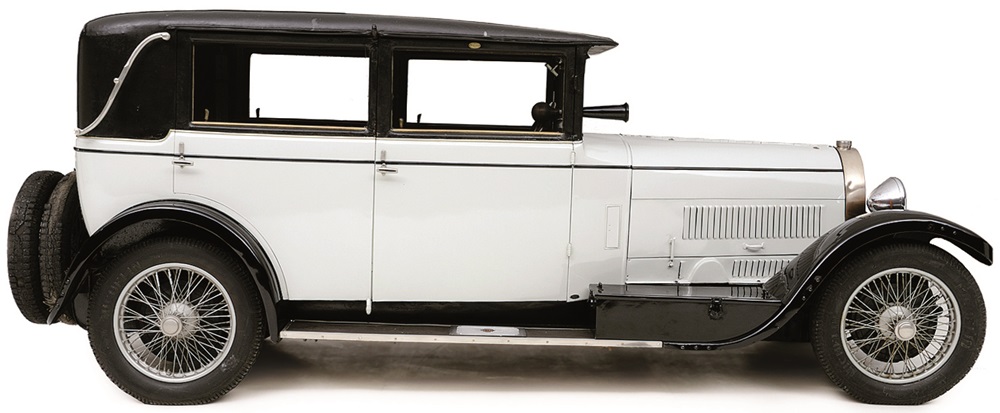1927 Bugatti Type 44 Bergeon & Descoins Faux Cabriolet

The descriptions of the Classic Cars in the Directory were partly generated or supplemented with the help of artificial intelligence (AI). The content may occasionally not always be entirely accurate or factually correct despite careful checking.
The Bugatti Type 44 Bergeon & Descoins Faux Cabriolet 1927 is a truly exceptional automobile that showcases the remarkable engineering prowess of Bugatti. This car is a prime example of exceptional skill in engineering and styling, making it one of the most sought-after cars of its time.
At first glance, the car's design might appear understated, but on further inspection, the car reveals its key features that make it stand out from the rest. The vehicle's striking faux cabriolet body is a marvel of design, with sweeping arrow-like lines that flow from the car's front toward its rear. It is a testament to the exquisite craftsmanship that is required when designing such a fine automobile.
The engine of the Bugatti Type 44 Bergeon & Descoins Faux Cabriolet 1927 is an eight-cylinder, 3,000 cc powerhouse that was designed to deliver a smooth, seamless ride. It employs a dual overhead camshaft with a five-bearing crankshaft to ensure that every component works in perfect harmony, delivering robust power with optimal fuel efficiency. This car is capable of producing up to 80 horsepower, propelling it from 0 to 60 mph in just eight seconds.
The suspension of this car is advanced, and it is made of one of the best-balanced consoles of its time where the front has semi-elliptical springs, and the rear has quarter-elliptical springs with a worm-and-sector steering mechanism. The braking system comprises four-wheel drum brakes that provide excellent stopping power, making stops more controlled and safer.
The car's interior is equally impressive with a beautiful handcrafted wooden dashboard equipped with an array of gauges that deliver critical information about the car's performance. The seats are upholstered in buttery soft leather to maximize comfort for the driver and passengers. The entire cabin is outfitted with various deluxe amenities such as AC, radio, and heating systems that deliver a warm and cozy vibe making every drive an experience to relish.
In conclusion, the Bugatti Type 44 Bergeon & Descoins Faux Cabriolet 1927 is an exceptional automobile with a breathtaking design, advanced engineering and utmost luxury. It is a car that deserves to be driven and fully experienced to appreciate the combination of its beauty and technical prowess. Whether you are an avid car collector or simply enjoy the finer things in life, this automobile is sure to leave you in awe.
Milestones
- The Bugatti Type 44 Bergeon & Descoins Faux Cabriolet was first introduced in 1927. - The car featured a narrow and sleek design that was typical of Bugatti models of that era. - The Type 44 was powered by a 3.0-liter inline-eight engine that was capable of producing 80 horsepower. - The car was equipped with a four-speed manual transmission and could reach a top speed of around 90 miles per hour. - The Type 44 was notable for its many luxurious features, including leather seats, wood trim, and a unique faux cabriolet body style. - The Bergeon & Descoins Faux Cabriolet variant of the Type 44 was a rare and highly sought-after model. - The Type 44 was produced until 1930, with a total of 1,095 units built during that time. - Today, the Bugatti Type 44 is considered a classic car and is often sought after by collectors and enthusiasts of vintage automobiles.Technical
- Engine: inline 8-cylinder, 2.9-liter - Power output: 80 horsepower at 4,500 rpm - Transmission: 4-speed manual - Suspension: front and rear leaf springs - Brakes: all-wheel mechanical drum brakes - Top speed: approximately 93 mph (150 km/h) - Wheelbase: 125 inches (3,175 mm) - Length: 165 inches (4,191 mm) - Width: 59 inches (1,499 mm) - Weight: approximately 2,800 pounds (1,270 kg) - Body: faux cabriolet (convertible with fixed rear quarter panels) - Production: approximately 1,095 examples built between 1927 and 1930.